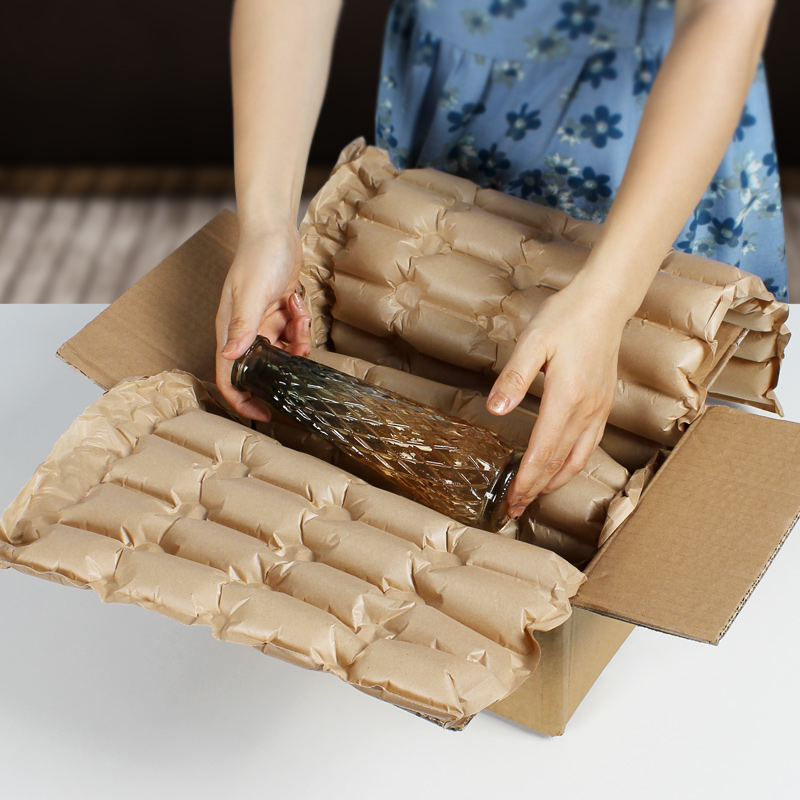- 【Uniteland Packaging】Welcome to Uiteland(www.uniteland.com)Dependable and secure packaging for all.
- Call us 86-136-0004-4028
Introduction:
In today’s fast-paced world, packaging plays a crucial role in ensuring the safe transit of goods. One product that has gained immense popularity in recent years is filling paper. This versatile packaging cushioning solution offers excellent protection and helps safeguard delicate items during shipping. In this article, we will delve into the world of filling paper, exploring its benefits, various types, and how it can be used effectively to enhance product protection.
Understanding Filling Paper:Filling paper, also known as packaging cushioning paper pads or void fill materials, is designed to fill empty spaces inside packages, preventing products from moving or colliding during transit. It acts as a protective barrier, reducing the risk of damage and ensuring items reach their destination unscathed.
Key Benefits of Filling Paper:
2.1 Product Protection: The primary purpose of filling paper is to protect fragile or sensitive items from impact and vibrations during handling and shipping. By providing cushioning and shock absorption, filling paper reduces the risk of breakage, scratches, and other forms of damage.
2.2 Cost-Effective: Filling paper presents a cost-effective solution compared to other packaging materials such as foam. It is lightweight, takes up minimal space, and can be easily converted into various shapes, making it an efficient option for both small and large-scale operations.
2.3 Eco-Friendly: In an era where sustainability is a priority, filling paper stands out as an eco-friendly packaging solution. Made from recycled content or renewable materials, it can be recycled and is biodegradable, reducing environmental impact.
2.4 Versatility: Filling paper is available in various formats, including rolls, sheets, and pads. Its versatility allows it to be used with different packaging types, such as boxes, mailers, and envelopes. Additionally, it can be customized to fit specific product shapes and sizes, ensuring a snug and secure fit.
Types of Filling Paper:
3.1 Crumpled Paper: Crumpled paper is one of the most common types of filling paper. It is created by shredding or compressing certain types of paper, such as kraft paper or newsprint. Crumpled paper provides good protection and is easily moldable to fill voids.
3.2 Die-Cut Paper Pads: Die-cut paper pads are pre-cut sheets of filling paper that come in various shapes and sizes. These pads provide an additional layer of protection by fitting precisely around products, minimizing shifting during transportation.
3.3 Air Pillows: Air pillows are filled with air and can be used as a void-fill material. While they are not technically filling paper, they offer similar protective benefits.
Effective Usage of Filling Paper:
4.1 Assessing Packaging Needs: Before selecting filling paper, it is essential to evaluate the fragility and size of the products being shipped. This helps determine the quantity and type of filling paper required for optimal protection.
4.2 Proper Placement: Filling paper should be strategically placed around the product, ensuring all voids are filled without excessive compression. This allows for maximum cushioning and reduces the risk of damage.
4.3 Integration with Other Packaging Materials: Filling paper can be used in conjunction with other packaging materials, such as bubble wrap or foam, for enhanced protection. By combining different materials, the overall packaging solution becomes more robust.
4.4 Testing and Quality Assurance: It is crucial to conduct thorough testing and quality checks to ensure the effectiveness of filling paper in protecting products during shipping. Regular reviews and adjustments to packaging systems contribute to continuous improvement and customer satisfaction.
Conclusion:
Filling paper, with its excellent protective properties, cost-effectiveness, eco-friendliness, and versatility, has revolutionized the way products are packaged for shipping. By utilizing filling paper as a packaging cushioning solution, businesses can ensure their goods arrive in pristine condition, improving customer satisfaction and reducing product returns. Embracing this innovative packaging solution is a step towards creating a sustainable and reliable shipping process in an increasingly competitive market.
- Air Pillow Packaging: Versatile Packing Solutions for Your Products
- Is Your Packaging Killing Profits? See How Air Cushion Film Reduce Material Costs
- UniteLand Packaging A Complete Guide to Wine Air Column Bags
- From Privacy Guard to Shockproof Pro: Meet PackBest Black Film Air Cushion Packaging
- How paper air cushions are solving cross-border shipping challenges?
Contact Form
Search
Related News
Hot Tags
Contact Us
Tel:86-136-0004-4028
Email:info@uniteland.com
Working Hours:Monday-Saturday,08:00-17:30
© 2025. All Rights Reserved. 粤ICP备2023037612号





